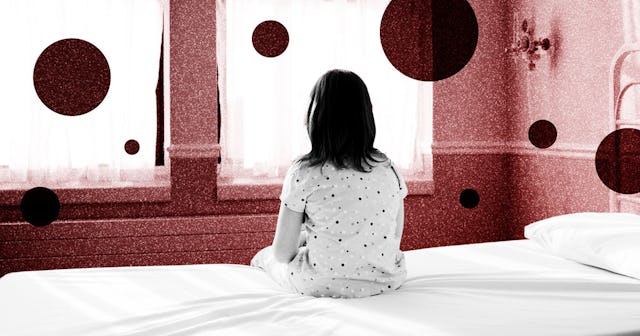Kids Can Be COVID-19 ‘Long Haulers’ Too

There are few absolutes when it comes to COVID-19. As our base of knowledge about this deadly virus grows, what we thought we knew has often turned out to be only half the full story.
At first, we thought contaminated surfaces were one of the most significant ways COVID-19 was transmitted. Now we’ve learned that while contaminated surfaces can pose a risk, respiratory drops entering through the respiratory system are the main source of transmission. (So, wear a mask.) Once upon a time, back in the earliest days of the pandemic, we believed COVID-19 was only a respiratory virus, and now we know it can affect so many more systems in the body.
And oh so many months ago, we believed children were spared from the worst of the effects of this virus—from death and vicious disease—and now, with hearts full of sorrow and grief, we know that’s not always the case. In the last two weeks of July, nearly 100,000 children tested positive for COVID-19. Children have died and they’ve suffered–from the illness and the mysterious inflammatory condition known as MISC-C that’s sending kids to the hospital after kids have recovered from their initial infection. (Or in some instances, months after having an asymptomatic infection that never presented itself.)
And we’re now learning that kids can be long haulers, too.
What Is A Long Hauler?
Back in March, when the World Health Organization declared COVID-19 a global pandemic, the term “long hauler” didn’t exist. The term “long-hauler” was created in Facebook support groups by people who, weeks and months after an initial COVID-19 diagnosis, were still suffering the symptoms of the virus. The symptoms can include shortness of breath, chest pains, vomiting, chronic fatigue and neurological symptoms that range from headaches to brain fog. Even hair loss.
Public awareness was slow to catch up to what many in the long hauler community were saying. But on July 24th, the CDC released a report confirming that one-third of COVID-19 patients who weren’t hospitalized for the virus were suffering from symptoms weeks after initially testing positive for the virus. In the case of 18-34 year olds with no chronic medical conditions, 20% hadn’t returned to their pre-infection state.
Celebrities are also coming forward to help bring awareness to the struggles long-haulers are facing. Alyssa Milano revealed on her Instagram that she is a COVID-19 long-hauler. Months after initially showing symptoms, she’s still dealing with severe shortness of breath and hair loss.
Kids As Long Haulers
Chinnapong/Getty
Even if we’d known about long haulers from that fateful day in March when COVID-19 officially became a global pandemic, the term probably would not have been used in relation to children. Because then we believed kids were spared from the worst of this deadly virus. And if they were spared, then they certainly couldn’t be sick for weeks and months after the initial onset of symptoms.
But some kids are. And we don’t know why.
CNN told the story of 14-year-old dancer Indiana Evans, who practiced dance for sixteen hours a week before the pandemic, and now struggles to complete a grocery store trip. Her mother reports that her daughter’s doctors have diagnosed her with post-COVID-19 fatigue syndrome.
Jen Stefanic told CNN the story of her three children, ages twelve, ten, and seven, who’d all been experiencing a variety of symptoms including “headache, low fever, aches and chills, joint pain, rashes, acid reflux, diarrhea, insomnia, loss of taste and smell, cough, wheezing and swelling of hands and feet, since late May.”
A mother in the English midlands also told the story of her three boys who began feeling symptoms in mid-March and didn’t begin to feel better until mid-July. (That’s four—four—months!) Her boys experienced symptoms that included COVID toes, chest tightness, stomach aches, daily nosebleeds, and knee and hip joint pain during those four months.
These stories are coming to light as the debate about whether or not to reopen schools rages. The argument most often heard in support of opening schools is that schools should reopen because children don’t get sick, and if they get sick, they recover quickly and easily. Aside from the fact this argument completely ignores the truth that children are not the only ones inside school buildings—teachers, administrators, and maintenance personnel are adults inside schools with no magic special immunity—the argument also falls apart in the face of stories like the ones told above. Kids might be sick for months. Kids with no underlying conditions who love and live to dance may be left incapable of dancing for an indeterminate period of time.
The truth is that COVID-19 is not as deadly to children as it is for older adults. Children likely will survive. (Though, even one death is one too many.) But we don’t yet know the long-term effects of this novel virus, which affects the heart and brain and every other organ in the body. And we don’t know why some children become long-haulers and some don’t. We know only that they do become long haulers, and that we’ll know more with time.
The point of telling these stories is not to scare anyone—because the truth is that we should be scared, there’s a deadly virus with unknown consequences circulating around the globe—but instead to bring awareness to the truth that kids can be long haulers too.
This article was originally published on